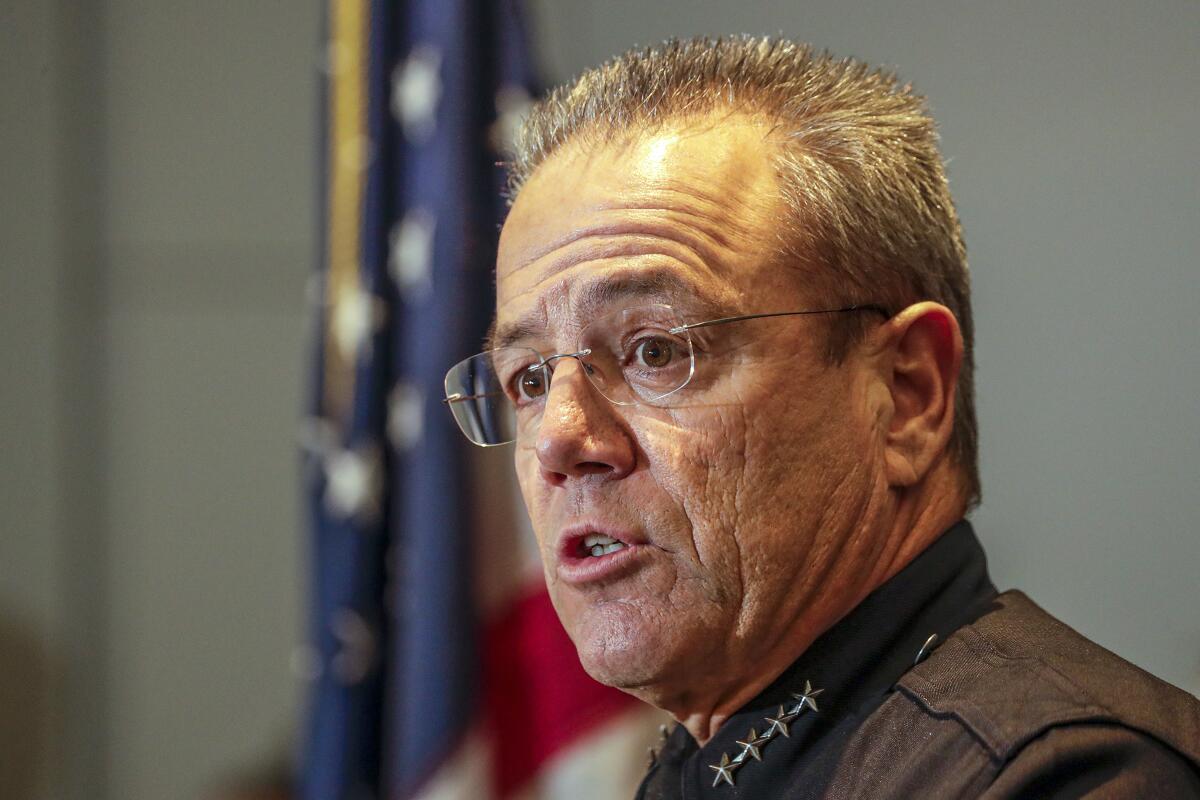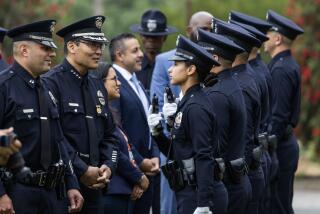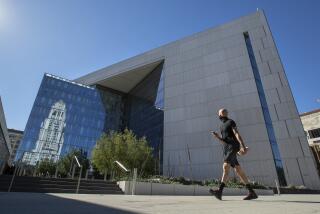L.A. homicides are down again. Police credit thousands of extra patrol hours

The Los Angeles Police Department had extra boots on the street last year — more than 300,000 patrol hours of them.
It’s a strategy that city officials say has helped continue to drive down Los Angeles’ violent crime. Homicides dropped from 260 in 2018 to 253 in 2019 — the 10th consecutive year the city saw fewer than 300 homicides.
“We needed to increase the instances that officers and the community could work together,” Chief Michel Moore said Wednesday at a news conference at the agency’s downtown headquarters. “The prioritization of field work was critical.”
Los Angeles is much safer than in previous decades. In 1992, almost 90,000 violent crimes were reported. Homicides rose to almost 1,100 that year before dropping sharply in the 1990s and continuing to do so in the 2000s. The number of homicides began to grow in 2014, with 2017 marking the first decrease.
Last year, the LAPD added 200 personnel to the field, said Moore, who explained that the increase has proved essential despite coming at the cost of other resources.
It’s a decision that Mayor Eric Garcetti supports. About 1.3 million hours of patrol have been added every year since 2016, he said. Technological advancements have also freed officers to spend more time in communities and less time on paperwork.
“We all know the most important number is the number of hours that police are spending patrolling and protecting, not filling out reports,” Garcetti said.
Emily Owens, a professor of criminology at UC Irvine, said there is scientific evidence suggesting that crime falls when police departments place officers in high crime areas. But there still needs to be more research into whether reallocating officers’ work hours from filling out paperwork to patrolling the street substantially reduces crime.
“Those specific minutes where an officer doesn’t have to fill out paperwork, what are they now doing in those minutes? Are they really finding themselves in situations where they are truly reducing crime?” she said.
Besides homicides, Moore and other officials touted other reductions in crime and violent encounters. Total gang crime dipped 6.3%, and property crime decreased 7.4%.
Officer-involved shootings dropped from 33 in 2018 to 26 in 2019, a historical low.
“We are pleased to hear about the numbers of officer-involved shootings and use of force going down,” said Eileen Decker, president of the Board of Police Commissioners.
But she added: “We’re not satisfied with these numbers. We’re going to work diligently in conducting our oversight.”
Garcetti also credited the citywide crime reductions to the agency’s outreach in communities that experience high levels of crime. He praised the department’s Community Safety Partnership, a community policing model in housing developments and neighborhoods such as South Park where officers build relationships with residents.
These areas, he said, are seeing fewer violent and property crimes. At the news conference, the chair of the L.A. City Council’s Public Safety Committee, Monica Rodriguez, announced that the city was about to launch a community safety partnership in Pacoima’s San Fernando Gardens.
Anne Tremblay, the director of the mayor’s Office of Gang Reduction and Youth Development, said the program’s community intervention workers responded to more than 500 violent incidents in 2019 and invested more than 90,000 hours of peacekeeping activities. Last year saw a 5% increase in youth and families served by the program’s providers.
“This work matters and it’s making a difference,” she said.
Areas that the agency has to work on, Moore said, include reducing hit-and-run traffic fatalities in South L.A., which has the highest number citywide. The department is also taking steps to improve accountability among its officers. Starting this month, Moore said, supervisors in the agency’s gang units will pick videos from officers’ body-worn cameras to audit.
“For 2020, we will invest in that time and energy to identify if there’s any outliers,” he said.
More to Read
Sign up for Essential California
The most important California stories and recommendations in your inbox every morning.
You may occasionally receive promotional content from the Los Angeles Times.










